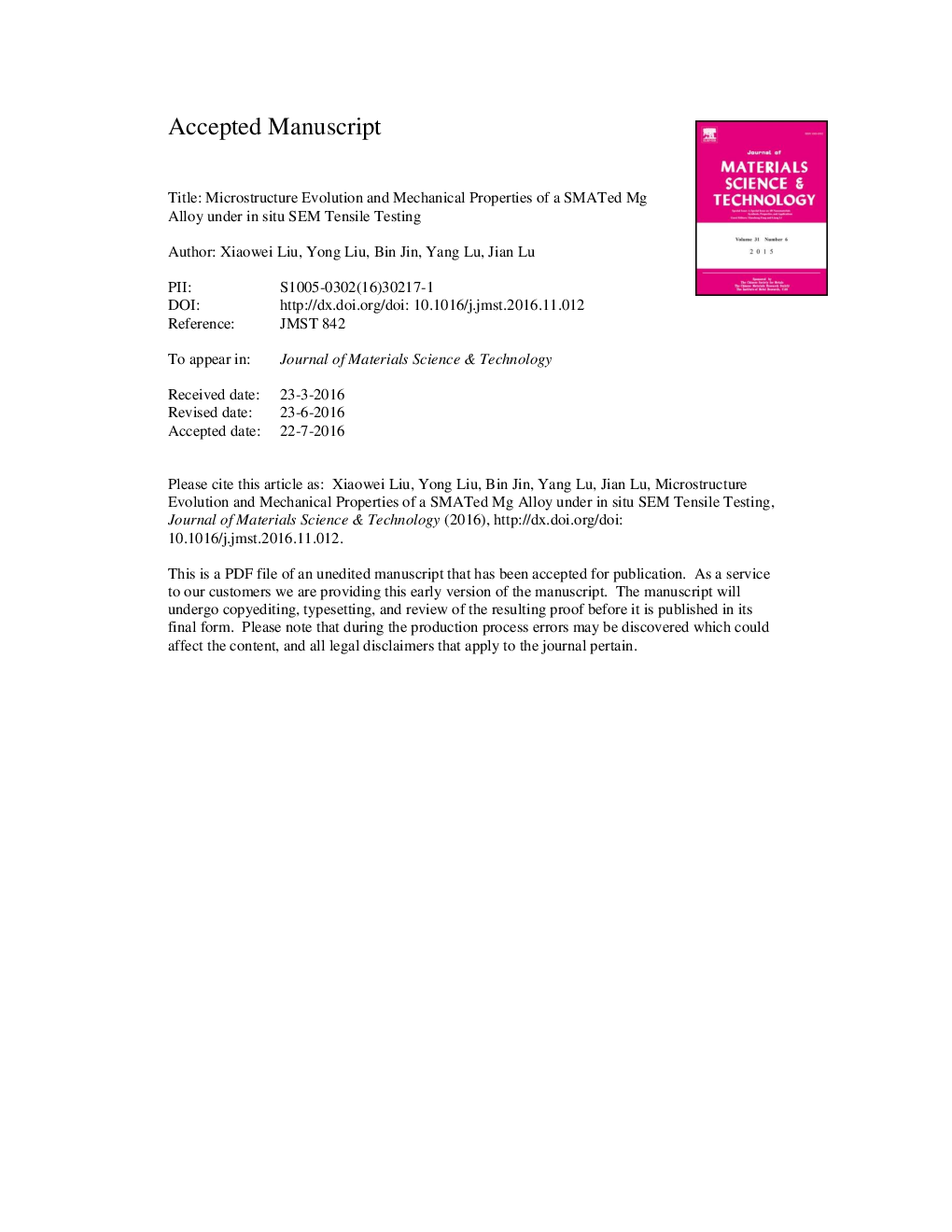| Article ID | Journal | Published Year | Pages | File Type |
|---|---|---|---|---|
| 5451599 | Journal of Materials Science & Technology | 2017 | 23 Pages |
Abstract
Surface mechanical attrition treatment (SMAT) has been recently applied to bulk polycrystalline magnesium (Mg) alloys with gradient grain size distribution from the impact surface to inside matrix, hence effectively improving the alloys' mechanical performances. However, in-depth understanding of their mechanical property enhancement and grain size-dependent fracture mechanism remains unclear. Here, we demonstrated the use of in situ micro-tensile testing inside a high resolution scanning electron microscope (SEM) to characterize the microstructure evolution, in real time, of SMATed Mg alloy AZ31 samples with different grain sizes of ~10âµm ('coarse-grain sample') and ~5âµm ('fine-grain sample'), respectively, and compared the results with those of a raw Mg alloy AZ31. The quantitative tensile tests with in situ SEM imaging clearly showed that fracture of 'fine-grain sample' was dominated by intergranular cracks, while both trans-granular and intergranular cracks led to the final failure of the 'coarse-grain samples'. It is expected that this in situ SEM characterization technique, coupled with quantitative tensile testing method, could be applicable for studying other grain-refined metals/alloys, allowing to optimize their mechanical performances by controlling the grain sizes and their gradient distribution.
Keywords
Related Topics
Physical Sciences and Engineering
Materials Science
Materials Chemistry
Authors
Xiaowei Liu, Yong Liu, Bin Jin, Yang Lu, Jian Lu,
